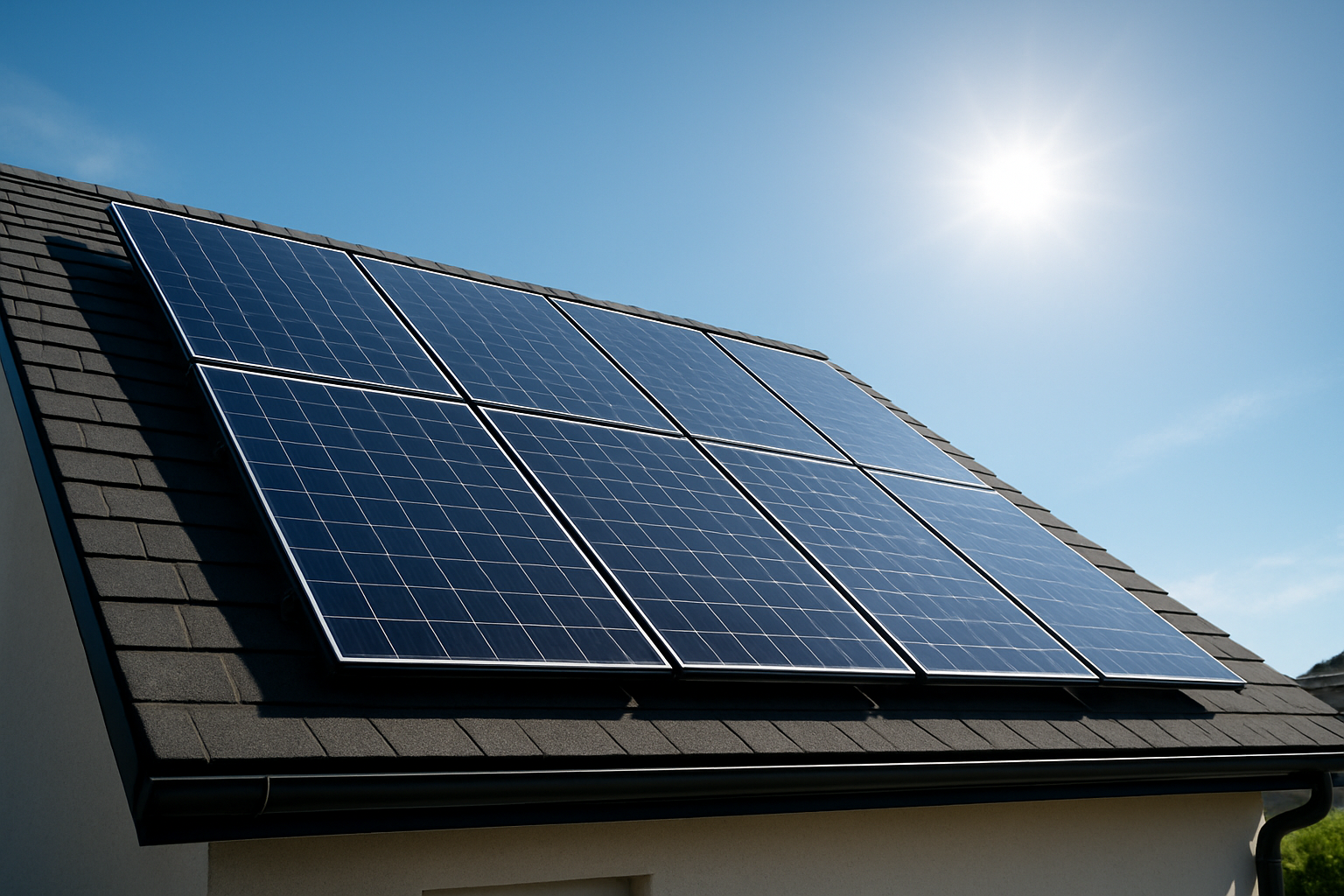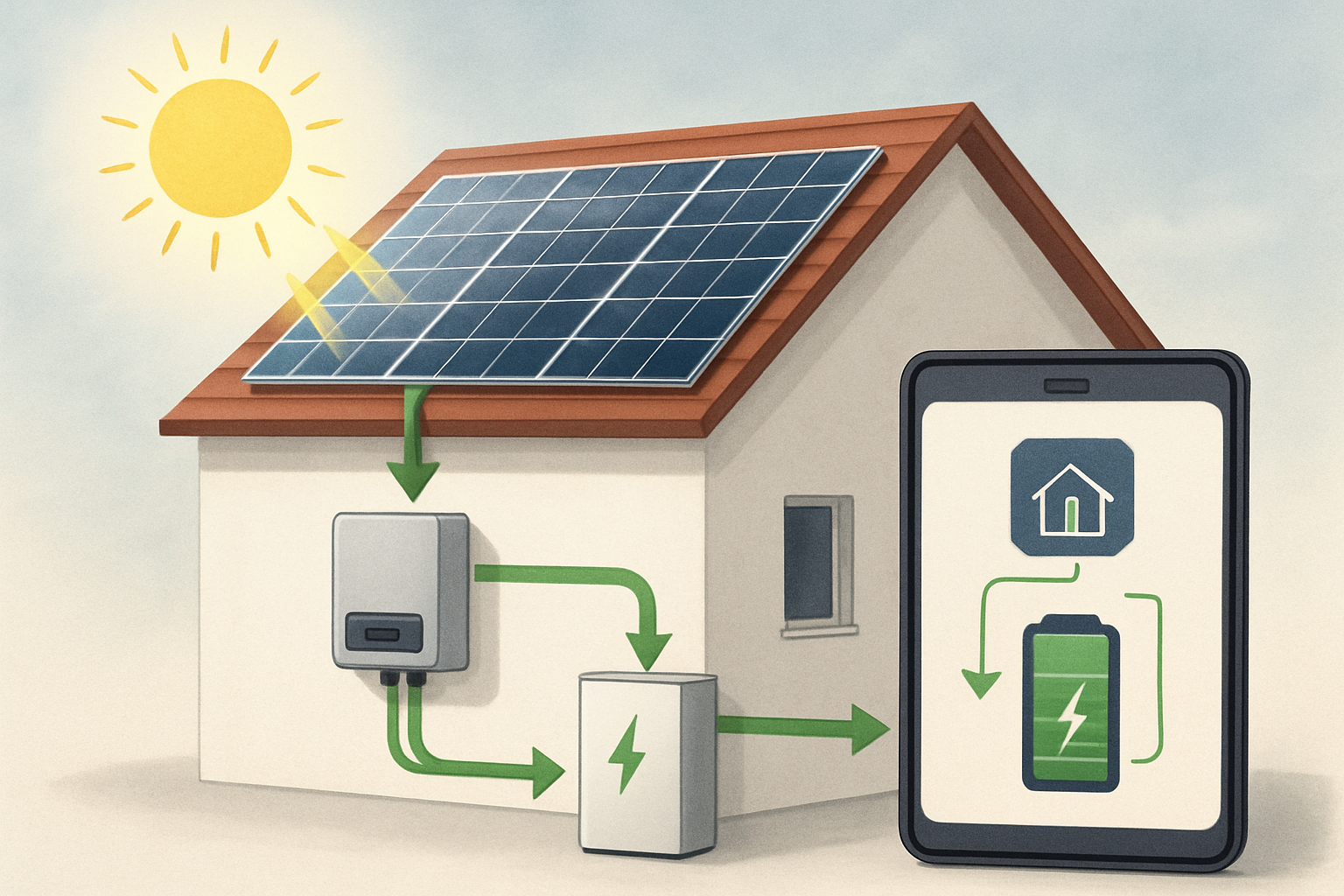Harnessing solar energy offers a path to energy independence and a sustainable future. The effectiveness of your solar energy system hinges significantly on solar panel efficiency, a metric indicating how well panels convert sunlight into usable electricity. Understanding the factors that influence this efficiency helps you make informed decisions, ensuring your investment delivers optimal performance and long-term value.

Fundamental Panel Characteristics and Design
The core design and materials of a solar panel establish its inherent efficiency capabilities. These foundational elements play a significant role in how much power a panel can generate under ideal conditions.
Cell Material and Type
The type of photovoltaic cell used is a primary determinant of efficiency. Monocrystalline, polycrystalline, and thin-film panels each offer distinct characteristics. Monocrystalline panels, crafted from a single silicon crystal, generally boast higher efficiency rates, typically ranging from 15% to 22%, and sometimes higher, making them suitable for installations with limited space. Polycrystalline panels, made from multiple silicon fragments, are often more cost-effective, with efficiency rates usually between 13% and 20%. Thin-film solar cells, while more flexible and lighter, tend to have lower efficiencies, often in the 10% to 20% range. The International Energy Agency (IEA) has noted a significant shift towards more efficient monocrystalline wafers and advanced cell designs like PERC and TOPCon technologies in recent years, driving further efficiency gains. IEA
| Panel Type | Typical Efficiency Range | Key Characteristic |
|---|---|---|
| Monocrystalline | 15% - 22% (or higher) | High efficiency, space-efficient, uniform black appearance. |
| Polycrystalline | 13% - 20% | Cost-effective, blue hue, slightly lower efficiency. |
| Thin-Film | 10% - 20% | Flexible, lighter, lower efficiency, niche applications. |
Temperature Coefficient
Solar panels are tested under Standard Test Conditions (STC) at 25°C (77°F). However, in real-world scenarios, panel temperatures often exceed this. The temperature coefficient indicates how much a panel's efficiency decreases for every degree Celsius increase above 25°C. Most crystalline silicon solar panels have a temperature coefficient between -0.3% /°C and -0.5% /°C. This means that for every 1°C rise above 25°C, the panel's power output can drop by that percentage. For example, a panel with a -0.4% /°C coefficient will lose 4% of its efficiency if its temperature rises by 10°C. Thin-film panels typically have lower temperature coefficients, performing relatively better in hot conditions.
Panel Size and Layout
The physical dimensions and the internal arrangement of cells within a module influence its rated capacity and efficiency. Larger, more efficient panels can generate more power from a given surface area. This factor becomes particularly important when roof space is limited. The overall layout and design of the cells and module components also play a role in minimizing internal electrical losses and maximizing light absorption. U.S. Department of Energy
Environmental and Operational Influences
Beyond the panel's inherent design, external environmental conditions and how the system operates significantly affect daily energy production.
Irradiance (Sunlight Intensity)
The amount of sunlight reaching the panels, known as solar irradiance, directly impacts electricity generation. Higher intensity sunlight leads to greater electron excitation within the solar cells, increasing current generation and boosting efficiency. Solar irradiance varies throughout the day, by season, and with weather conditions. For instance, a clear, sunny day will yield significantly more power than a cloudy one. Standard Test Conditions assume an irradiance of 1000 W/m² for panel ratings. EIA
Angle and Orientation
Optimizing the tilt angle and orientation (azimuth) of solar panels ensures maximum exposure to direct sunlight throughout the day and year. In the northern hemisphere, panels typically perform best when facing south, while in the southern hemisphere, a north-facing orientation is ideal. The optimal tilt angle often correlates with the latitude of the installation site, allowing panels to capture more direct sunlight as the sun's position changes seasonally.
Operating Temperature
While solar panels need sunlight, excessive heat reduces their efficiency. As previously discussed with the temperature coefficient, higher operating temperatures cause a decrease in voltage output from the cells. Panels can become significantly hotter than the ambient air, especially when mounted directly on dark roofs without adequate ventilation. Proper installation that allows for airflow behind the panels can help mitigate this effect.
Soiling and Shading
Accumulated dust, dirt, pollen, leaves, and other debris on the panel surface can block sunlight, directly reducing the active area available for energy conversion. Even partial shading from trees, chimneys, or adjacent buildings can have a disproportionate negative impact on overall system output, particularly in string inverter systems, as it can reduce the output of an entire series of panels. Regular cleaning and careful site planning to minimize shading are practical steps to maintain efficiency. U.S. Department of Energy
System Integration and Degradation
The components that work with your solar panels and the natural aging process also influence the system's long-term performance.
Inverter Efficiency and System Components
Solar panels produce direct current (DC) electricity, which must be converted into alternating current (AC) for use in homes or to feed into the grid. Solar inverters perform this crucial conversion. The efficiency of an inverter, typically ranging from 95% to 98%, directly affects how much of the DC power is successfully transformed into usable AC power. High-quality inverters, such as the hybrid inverters often integrated into modern home energy storage systems, minimize conversion losses. Our solar inverters are designed to achieve high conversion rates, ensuring more of your generated solar energy powers your home.
Beyond the inverter, other balance-of-system (BOS) components, including wiring and charge controllers, also contribute to overall system efficiency. Resistive losses in wiring can occur if wires are undersized or connections are poor. Using appropriately sized, high-quality wiring minimizes these losses. For off-grid solutions, the efficiency of charge controllers and the battery bank also plays a vital role in maximizing energy capture and delivery.
Degradation Over Time
Solar panels, like most technologies, experience a gradual decrease in power output over their lifespan. This process is called degradation. The National Renewable Energy Laboratory (NREL) indicates that the median degradation rate for solar panels is around 0.5% per year, meaning a panel might still produce about 90% of its original output after 20 years. Factors contributing to degradation include prolonged exposure to UV light, thermal stress, and phenomena like Potential Induced Degradation (PID) and Light-Induced Degradation (LID). PID occurs when differences in voltage across the panel cause current leakage, reducing performance, while LID is an initial efficiency drop observed shortly after first exposure to sunlight. Investing in high-quality panels with low degradation rates ensures a more consistent energy supply over decades.
Maintenance and Monitoring
Regular maintenance and performance monitoring are crucial for sustaining solar panel efficiency over the long term. This includes periodic cleaning to remove accumulated dirt and debris, as well as routine inspections to identify and address any issues, such as loose connections, damaged wiring, or unexpected panel underperformance. Many modern energy storage systems offer integrated monitoring platforms, providing real-time data on system output and helping identify potential problems promptly. U.S. Department of Energy
Maximizing Your Solar Investment
Achieving optimal solar panel efficiency involves a combination of selecting the right technology, ensuring proper installation, and diligent maintenance. By understanding the fundamental characteristics of solar panels, the impact of environmental factors, and the role of system integration and degradation, you can make informed decisions that enhance your system's performance. Our commitment to reliable and scalable energy solutions, from high-performance lithium batteries to integrated home energy storage systems and efficient solar inverters, supports your journey towards greater energy independence. Investing in a well-designed and properly maintained solar energy system ensures you receive the maximum benefit from every ray of sunlight.





Leave a comment
All comments are moderated before being published.
This site is protected by hCaptcha and the hCaptcha Privacy Policy and Terms of Service apply.